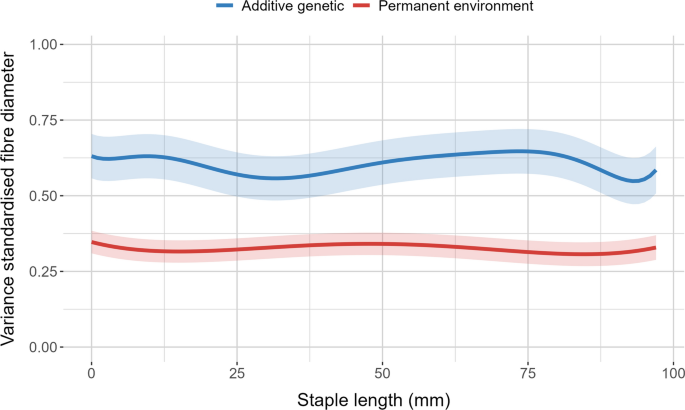Maximize Your Fiber Optic Efficiency: Comprehending Optical Fibre Size Analyser Technology
The performance of fiber optic systems is seriously influenced by the accuracy of their diameter, an aspect typically neglected in the pursuit of ideal signal honesty. Recognizing the technology behind optical fiber size analysers reveals the complex equilibrium in between measurement accuracy and manufacturing top quality. These gadgets not only boost compliance with sector criteria yet also provide real-time insights that can preemptively attend to prospective issues. Nonetheless, the effects of their usage extend beyond simple dimension; they can essentially alter the landscape of fibre optic efficiency. What variables should one think about to harness their complete potential?
Significance of Optical Fiber Size
The diameter of optical fibre plays an important role in determining the efficiency and performance of communication systems. On the other hand, smaller sizes have a tendency to support less modes, which can improve signal clearness and reduce crosstalk.

In addition, recognizing the diameter's effects can cause cost financial savings by reducing the need for signal boosting and repeaters in substantial networks (optical fibre diameter analyser). To conclude, the importance of optical fiber diameter can not be overstated, as it straight impacts the general performance and reliability of modern interaction systems

Exactly How Size Impacts Signal Quality
Signal top quality in optical fibre systems hinges substantially on the size of the fibre. The size affects several key specifications, consisting of attenuation, transmission capacity, and modal diffusion. A smaller diameter can result in greater depletion prices, resulting in signal loss as light travels through the fiber. This attenuation can compromise the integrity of the transmitted information, bring about a decline in signal quality, specifically over fars away.
Conversely, bigger sizes typically permit improved light capture and minimized modal dispersion, improving signal clarity. In multimode fibers, a larger core diameter can sustain multiple light settings, yet it may additionally introduce intermodal diffusion, which can break down signal high quality. Picking the ideal fibre size is critical for attaining the preferred performance in particular applications.
Furthermore, the communication in between the fibre diameter and the wavelength of the light used plays a vital role in figuring out the reliable transmission range and overall signal stability. Comprehending how fibre diameter impacts signal high quality is vital for network designers and designers making every effort to enhance optical fibre systems for trusted, high-speed information transmission.
Introduction of Size Analyser Technology
In many optical fiber manufacturing processes, accurate dimension of fibre diameter is vital for making sure constant performance and top quality (optical fibre diameter analyser). Diameter analysers are innovative instruments created to assess the physical dimensions of optical fibers with high precision. They employ advanced optical and laser innovations to determine the diameter, ovality, and concentricity of the fibre, hence giving important data for quality assurance
These analysers can run in-line throughout the production procedure or as part of off-line testing procedures. In-line systems make it possible for real-time surveillance, enabling producers to readjust parameters immediately, consequently keeping optimal manufacturing conditions. Off-line analysers, on the various other hand, offer comprehensive examinations of batches, guaranteeing that any discrepancies from specified tolerances are recognized and attended to.
Diameter analysers dramatically add to the reduction of flaws in optical fibres, boosting overall product reliability. By continually determining essential specifications, these innovations assist in compliance with market standards and specs. As the need for high-performance optical fibers remains to increase, the role of diameter analysers becomes progressively crucial in accomplishing the preferred high quality and performance requirements in fiber optic systems.
Key Functions of Fibre Diameter Analysers
Although different models of fibre size analysers exist, they commonly share numerous essential features that boost their capability and reliability. Among one of the most considerable functions is high-resolution measurement capabilities, which ensure accurate size analyses, vital for preserving quality assurance in fiber manufacturing. Additionally, numerous analysers incorporate innovative optical sensing units developed to spot minute variations in fiber size, hence giving very useful information for process optimization.
Another essential function is real-time monitoring, permitting operators to get prompt comments on fiber size throughout the manufacturing process (optical fibre diameter analyser). This ability helps with fast modifications and decreases the likelihood of issues. Numerous analysers additionally come furnished with straightforward interfaces, allowing drivers to quickly navigate via setups and data outputs
Additionally, durable data storage space and analysis performances are important for tracking historical efficiency patterns and making sure conformity with industry standards. Some models also offer connection options for combination into existing production control systems, enhancing overall functional efficiency. Finally, portable and portable styles permit versatile implementation within manufacturing atmospheres, making sure that top quality assurance processes are seamless and efficient. These features jointly add to the efficiency of fibre size analysers in enhancing fibre optic efficiency. her response
Best Practices for Fibre Optimization

First, normal calibration of optical fibre size analysers is necessary. This makes certain accurate measurements and minimizes possible discrepancies that can impact performance. Next off, maintaining a clean working setting is important; dirt and contaminants can result in indicate degradation.
Furthermore, it is vital to pick fibres that meet certain application demands. This involves examining variables such as attenuation, transmission capacity, and ecological problems. Correct setup methods must likewise be stuck to, including avoiding sharp bends and extreme stress, which can endanger fibre integrity.
Moreover, using sophisticated tracking systems can promote real-time performance evaluations, enabling punctual recognition of concerns. Normal screening and maintenance should be carried out to guarantee that fibres continue to be within ideal operational specifications.
Finally, training workers on the most up to date fiber optimization innovations and methods will certainly improve their capacity to implement reliable methods. By following these best techniques, companies can considerably view publisher site improve the efficiency and life expectancy of their optical fibre systems, ensuring reliable interaction and information transfer.
Conclusion
In final thought, the integration of optical fibre size analyser modern technology is essential for making the most of fibre optic efficiency. By making sure accurate measurements of fiber dimensions, these analysers significantly boost signal high quality and lower losses during information transmission.
Signal high quality in optical fibre systems pivots considerably on the size of the fibre.In many optical fiber manufacturing processes, accurate dimension of fibre size is vital for ensuring consistent efficiency and top quality. As the demand for high-performance optical fibres proceeds to rise, the function of size analysers ends up being significantly next page essential in attaining the wanted top quality and performance requirements in fiber optic systems.
These features collectively contribute to the effectiveness of fibre diameter analysers in enhancing fiber optic efficiency.
In verdict, the assimilation of optical fiber diameter analyser innovation is crucial for taking full advantage of fiber optic efficiency.